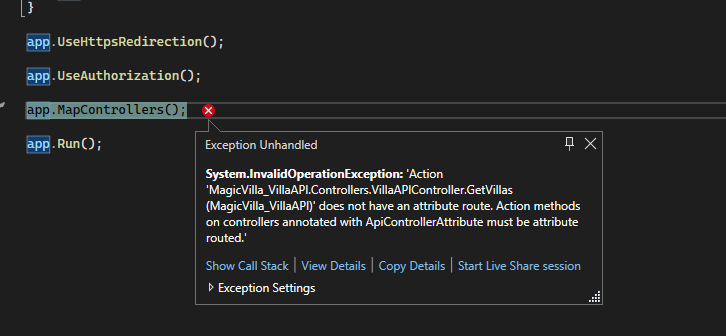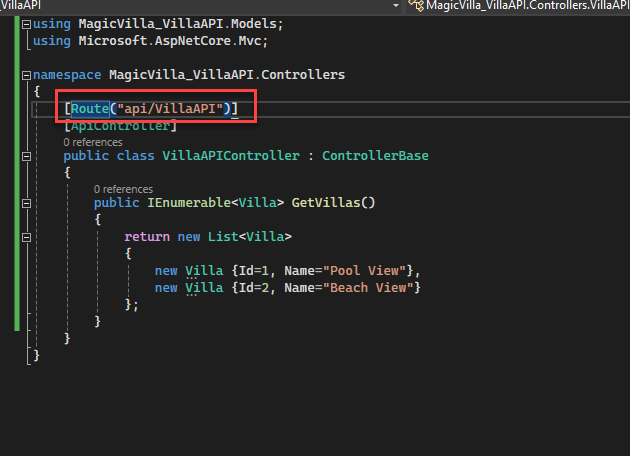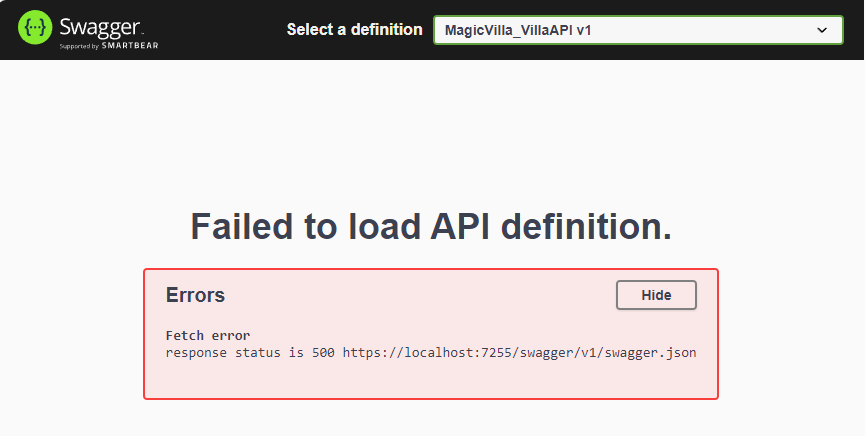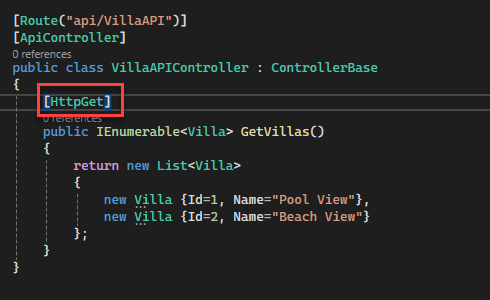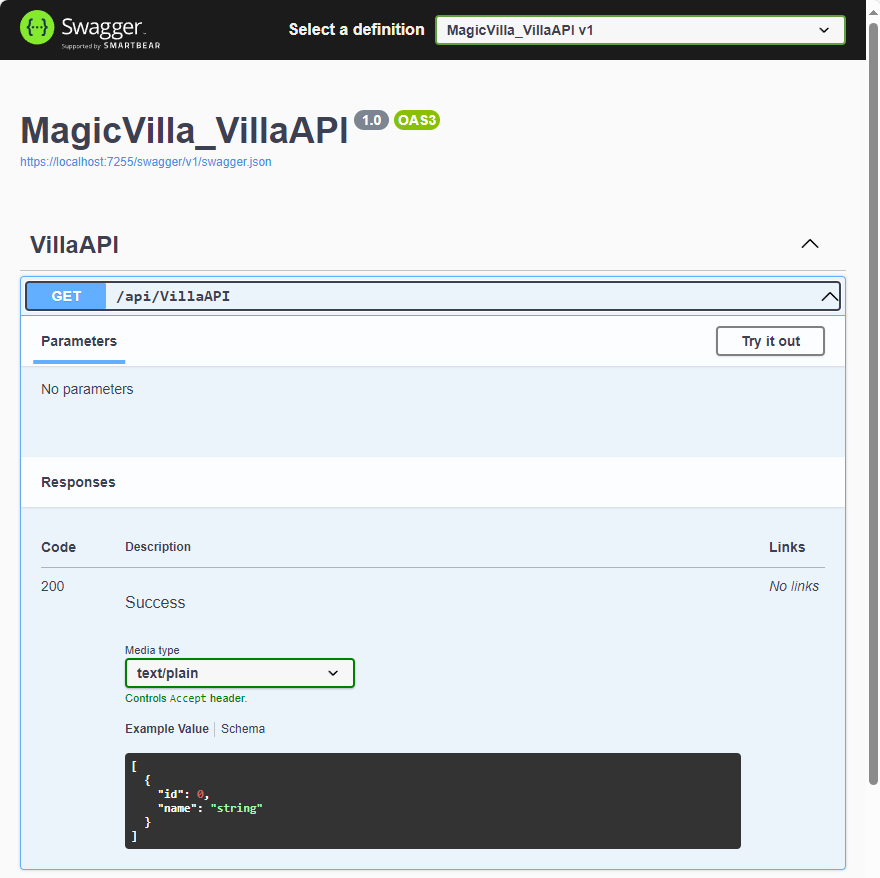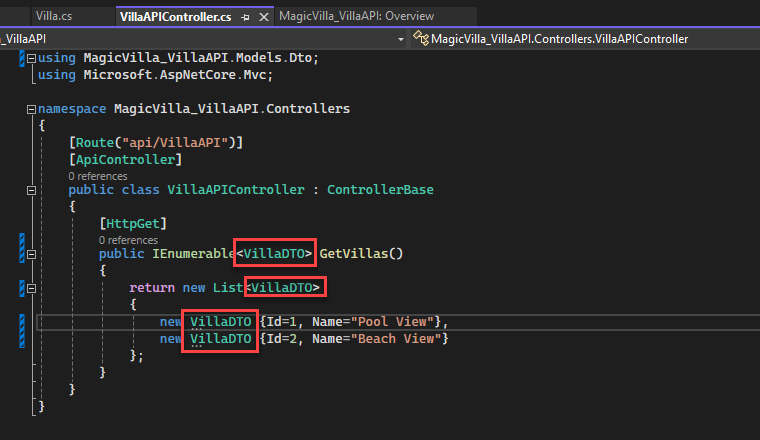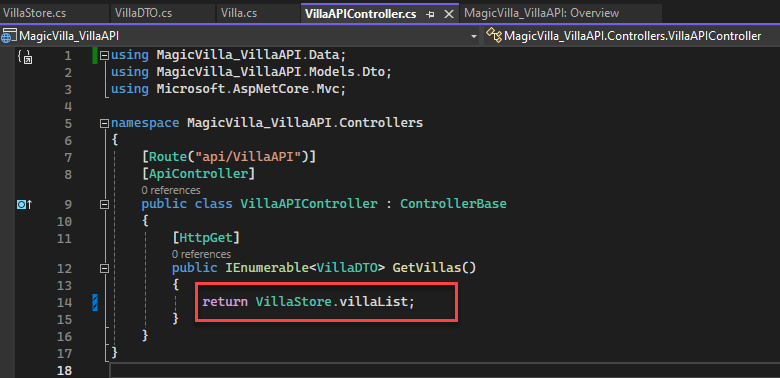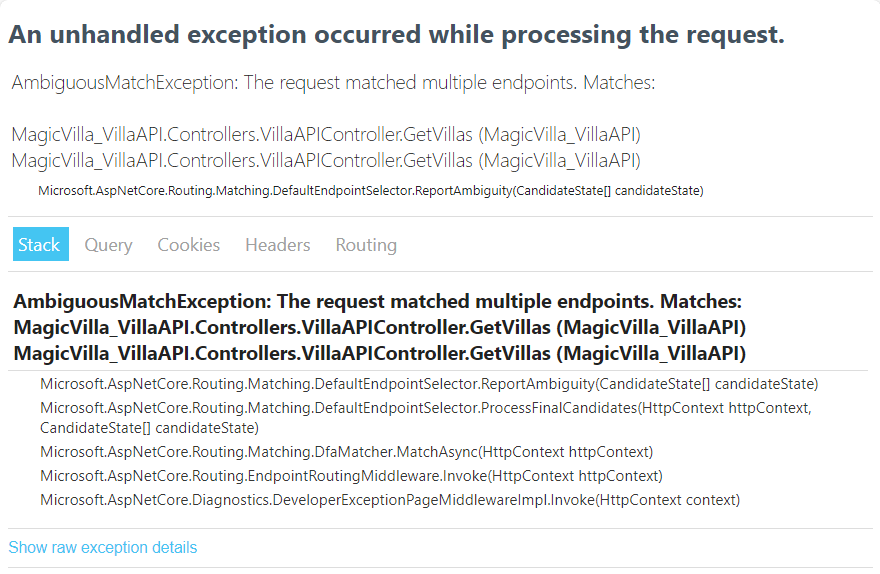.NET C# - RESTful Web API Note
The Request Object
- GET: fetches/requests resource
- POST: creates/inserts resource
- PUT: updates/modifies resource
- PATCH: updates/modifies partial resource
- DELETE: deletes/removes resource
Request’s Metadata
- Content Type: Content’s format
- Content Length: Size of the content
- Authorization: who is making the request
- Accept: What are the accepted type(s)
Request’s Content
- HTML, CSS, XML, JSON
- Information for the request
- Blobs
The Response Object
Status Codes for Operation Result
- 100-199: Informational
- 200-299: Success
- 200: OK (most common)
- 201: created
- 204: No Content
- 300-399: Redirection
- 400-499: Client Errors
- 400: Bad Request
- 404: Not Found (common client error)
- 409: Conflict
- 500-599: Server Errors
- 500: Internal Server Error (common server error)
Response’s Metadata
- Content type: content’s format
- Content Length: size of the content
- Expires: when is this valid
Response’s Content
- HTML, CSS, XML, JSON
- Blobs
Basic Controller
Require Annotation [ApiController] and inherit from ControllerBase class
Basic Model
If there is no route or endpoint API set up properly. We will see this
We need to add the route
However, we will get the error if we forgot to add the HTTP verb/method
resolve:
Note:
[Route("api/VillaAPI")]can be changed to[Route("api/[controller]")]- It would be better to keep the hardcode controller name since the class name could be changed
Data Transfer Objects - DTO
In brief, DTOs provide a wrapper between the entity or the database model and what is being exposed from the API
In a conventional real-world scenario involving API integration within our controllers, it is common practice to refrain from directly utilizing the Villa model. This approach is considered suboptimal for production applications. Instead, a more preferable methodology involves the incorporation of Data Transfer Objects (DTOs).
DTOs serve as an intermediary layer between the entity or database model and the data exposed through the API. This abstraction ensures a more structured and secure handling of data, contributing to improved code maintainability and overall system robustness in a production environment.
Create DTO
Replace DTO in controller
Add Data folder
Next, we want to set up the data folder to store the database logic. Later, we will convert this to use Entity Framework (EF) to make CRUD operation to the database.
Do not forget to use VillaStore that we just create.
Add another endpoint
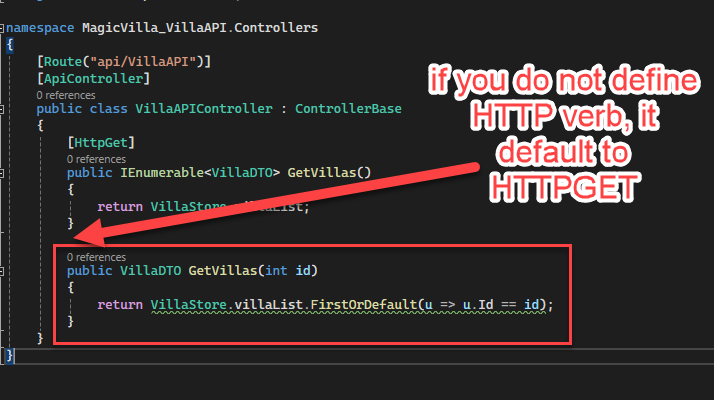
we will get this error again.
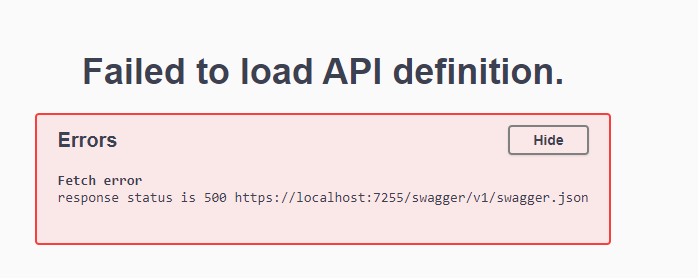
To debug this, we navigate to the old working API https://localhost:7255/api/villaAPI, we will see the information below. Basically, it complains about AmbiguousMatchException.
This happens because .NET does not which API endpoint to use. That request matched multiple endpoints in our case.
why is it getting confused?
We have defined in GetVilla that an ID is needed.
So if the ID is not present, it should by default, take the GetVillas (first api endpoint) that will return multiple villas.
In order to resolve this issue, we need to explicitly add id in our HTTPGet method as below for the second API
using MagicVilla_VillaAPI.Data;
using MagicVilla_VillaAPI.Models.Dto;
using Microsoft.AspNetCore.Mvc;
namespace MagicVilla_VillaAPI.Controllers
{
[Route("api/VillaAPI")]
[ApiController]
public class VillaAPIController : ControllerBase
{
[HttpGet]
public IEnumerable<VillaDTO> GetVillas()
{
return VillaStore.villaList;
}
[HttpGet("id")]
public VillaDTO GetVilla(int id)
{
return VillaStore.villaList.FirstOrDefault(u => u.Id == id);
}
}
}
To be more specific, we can also tell .NET that we are expecting the integer data type for the param as following.
[HttpGet("{id:int}")]
public VillaDTO GetVilla(int id)
{
return VillaStore.villaList.FirstOrDefault(u => u.Id == id);
}
Model Binding
Model binding is the process of mapping data from Http requests to the parameters of an action method.
source: from https://www.udemy.com/course/complete-web-api-course/learn/lecture/38660798#reviews
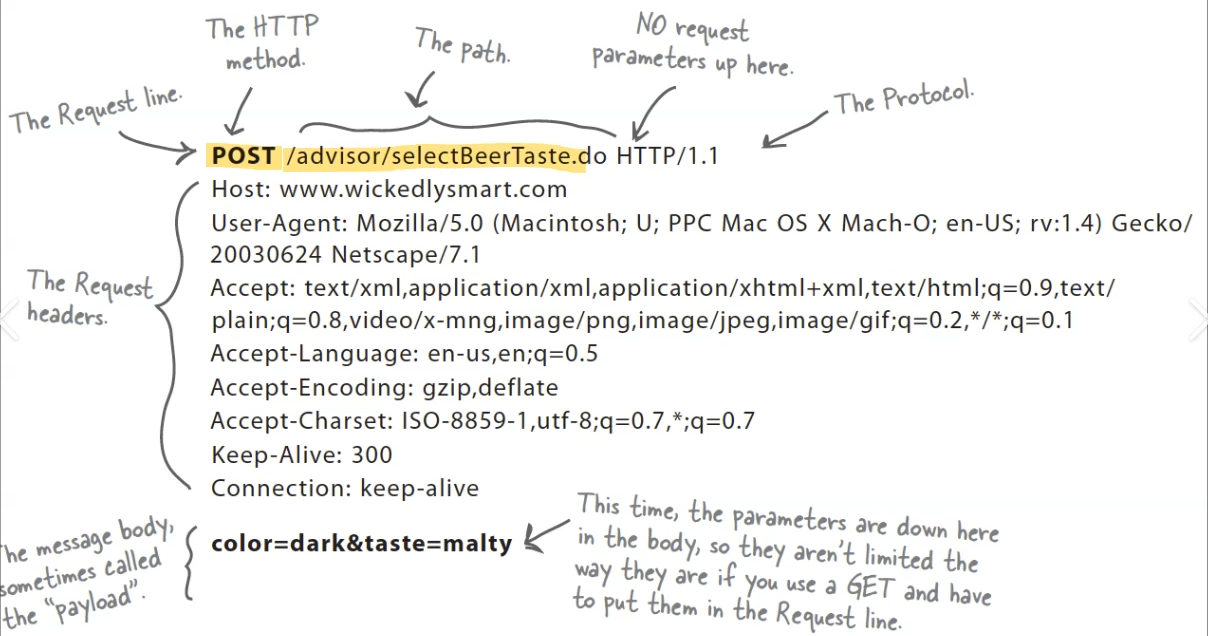
The ID is mapped from the root of the HTTP request into the integer parameter of the “GetShirtById” action method. In the following example, the id and color are mapped from the route to parameters passed into the function.
[HttpGet("{id}/{color}")]
public string GetShirtById(int id, string color) {
return $"Reading shirt: {id}";
}
we can also specify where the data coming from by using the followings (source)
- [FromQuery] - Gets values from the query string.
- [FromRoute] - Gets values from route data.
- [FromForm] - Gets values from posted form fields.
- [FromBody] - Gets values from the request body.
- [FromHeader] - Gets values from HTTP headers.
Example: FromRoute
[HttpGet("{id}/{color}")]
public string GetShirtById(int id, [FromRoute] string color) {
return $"Reading shirt: {id}";
}
Example: FromHeader
public void OnGet([FromHeader(Name = "Accept-Language")] string language)
Model Validation
- happens after model binding.
- used to validate user input in an ASP.NET Core app
Example: we need to put data annotation inside the model.
public class Shirt
{
public int ShirtId {get; set;}
[Required]
public string? Brand {get; set;}
[Required]
public string? Color {get; set;}
public double? Price {get; set;}
}
Custom Validation Attribute
- Create a custom validation class
public class Shirt_EnsureCorrectSizingAttribute : ValidationAttribute
{
protected override ValidationResult? IsValid(object? value, ValidationContext validationContext)
{
var shirt = validationContext.ObjectInstance as Shirt;
if (shirt != null && !string.IsNullOrWhiteSpace(shirt.Gender))
{
if (shirt.Gender.Equals("men", StringComparison.OrdinalIgnoreCase) && shirt.Size < 9)
{
return new ValidationResult("For men, the size has to be greater or equal to 8.");
}
else if (shirt.Gender.Equals("women", StringComparison.OrdinalIgnoreCase) && shirt.Size < 6)
{
return new ValidationResult("For women, the size has to be greater or equal to 6.");
}
}
return ValidationResult.Success;
}
}
- Add the custom data annotation on the property that we want to add custom validation
public class Shirt
{
public int ShirtId {get; set;}
[Required]
public string? Brand {get; set;}
[Required]
public string? Color {get; set;}
public double? Price {get; set;}
[Shirt_EnsureCorrectSizingAttribute]
public int? Size {get; set;}
public string? Gender {get; set}
}
Return Types
IActionResultfor return type in RESTFul Web API- use
OK()indicate the HTTP code 200 for success NotFoundfor HTTP 404
Example:
[HttpGet("{id}")]
public IActionResult GetShirtById(int id)
{
var shirt = shirts.FirstOrDefault(x => x.ShirtId == id);
if (shirt == null)
{
return NotFound();
}
return Ok(shirt);
}
ActionFilter Attribute
In ASP.NET, Action Filters are attributes that you can apply to either a controller action method or an entire controller. They allow you to run code before or after the execution of controller action methods. Action Filters can be used for tasks such as logging, authentication, caching, and more.
Example 1: Create Shirt_ValidateShirtIdFilterAttribute
// Shirt_ValidateShirtIdFilterAttribute.cs
public class Shirt_ValidateShirtIdFilterAttribute: ActionFilterAttribute
{
public override void OnActionExecuting(ActionExecutingContext context)
{
var shirtId = context.ActionArguments["id"] as int?;
if (shirtId.HasValue)
{
if (shirtId.Value <= 0)
{
context.ModelState.AddModelError("ShirtId", "ShirtId is invalid.");
var problemDetails = new ValidationProblemDetails(context.ModelState)
{
Status = StatusCodes.Status400BadRequest
};
context.Result = new BadRequestObjectResult(problemDetails)
}
}
else if (!ShirtRepository.ShirtExists(shirtId.Value))
{
context.ModelState.AddModelError("ShirtId", "Shirt doesn't exist.");
var problemDetails = new ValidationProblemDetails(context.ModelState)
{
Status = StatusCodes.Status404NotFound
};
context.Result = new NotFoundObjectResult(problemDetails)
}
}
}
Example 2: we create a new class, say Shirt_ValidateUpdateShirtFilterAttribute, and inherit the functionality from ActionFilterAttribute. Then, override the method OnActionExecuting.
public class Shirt_ValidateUpdateShirtFilterAttribute: ActionFilterAttribute
{
public override void OnActionExecuting(ActionExecutingContext context)
{
base.OnActionExecuting(context);
var id = context.ActionArguments["id"] as int?;
var shirt = context.ActionArguments["shirt"] as Shirt;
if (id.HasValue && shirt != null && id != shirt.ShirtId)
{
context.ModelState.AddModelError("ShirtId", "Shirt is not the same as id.");
var problemDetails = new ValidationProblemDetails(context.ModelState)
{
Status = StatusCodes.Status404NotFound
};
context.Result = new NotFoundObjectResult(problemDetails)
}
}
}
Finally, in the controller, we use the custom filter attribute that we’ve just created.
// ShirtsController.cs
public class ShirtsController: ControllerBase
{
[HttpPut("id")]
[Shirt_ValidateShirtIdFilter]
[Shirt_ValidateUpdateShirtFilterAttribute]
public IActionResult UpdateShirt(int id, Shirt shirt)
{
try
{
ShirtRepository.UpdateShirt(shirt);
}
catch
{
if (!ShirtRepository.ShirtExists(id)) return NotFound();
throw;
}
return NoContent();
}
}


